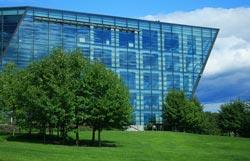Green building has a joint consideration for the economic, social and natural environment making it good for people and economic growth.

His presentation titled ‘Green Economy: Why Building Green is Good for People and Economic Growth’, De Fransesco says on an economic level, landlords and investors are rewarded with enhanced property returns, low capitalisation rates and green buildings stimulate investments
This is according to Anthony De Francesco, managing director of Investment Property Databank in Australia and New Zealand.
His presentation titled ‘Green Economy: Why Building Green is Good for People and Economic Growth’, De Fransesco says on an economic level, landlords and investors are rewarded with enhanced property returns, low capitalisation rates and green buildings stimulate investments.
He says more green buildings lead to lower carbon emissions.
Tenants who work in green buildings have increased productivity levels and these buildings allow for more efficient use of space and lead to improved IQ working space.
Click here to read the presentation.
Others say property owners and managers have a keen interest in the economic valuation implications of investments in environmental certification with the most prominent benefit of investments in green building design relating to reduced energy consumption.
This is according to the report: The Political Economy of Green Office Building by US authors David Harrison, Texas Tech University and Michael Seiler, Old Dominion University, Norfolk, Virginia.
The authors concur that additional benefits to green buildings have also been found with respect to employee productivity gains, strategic positioning and branding as well as marketing of the building.
While the above outline a number of potential advantages associated with embracing green buildings, a number of challenges still confront market participants and potentially undermine the widespread adoption of green building certifications, they write.
They say among these considerations are cost perceptions.

Tenants who work in green buildings have increased productivity levels and these buildings allow for more efficient use of space and lead to improved IQ working space.
Quoting another report, they say nearly three quarters of developers believe green development adds more than 5 percent to construction costs, with more than 40 percent believing cost premiums exceed 10 percent.
In a survey 400 commercial building users in Singapore found about 90 percent of the respondents consider price to be a great deterrent in choosing green buildings over conventional buildings.
Additional limiting factors plaguing the adoption of green building technologies include ongoing monitoring, maintenance and litigation concerns.
For multi-tenant facilities, this creates potential coordination and enforcement issues, which may limit future tenant flexibility and/or risk the building’s accreditation status, they explain.
Green certified buildings enjoy nominal rental premiums of approximately 3 percent, with premiums in effective rents after controlling for leasing concessions – even higher at slightly over 6 percent.
They add that selling prices of environmentally certified buildings are 16 percent higher than their observationally equivalent non-certified counterparts. – Denise Mhlanga
Readers' Comments Have a comment about this article? Email us now.









